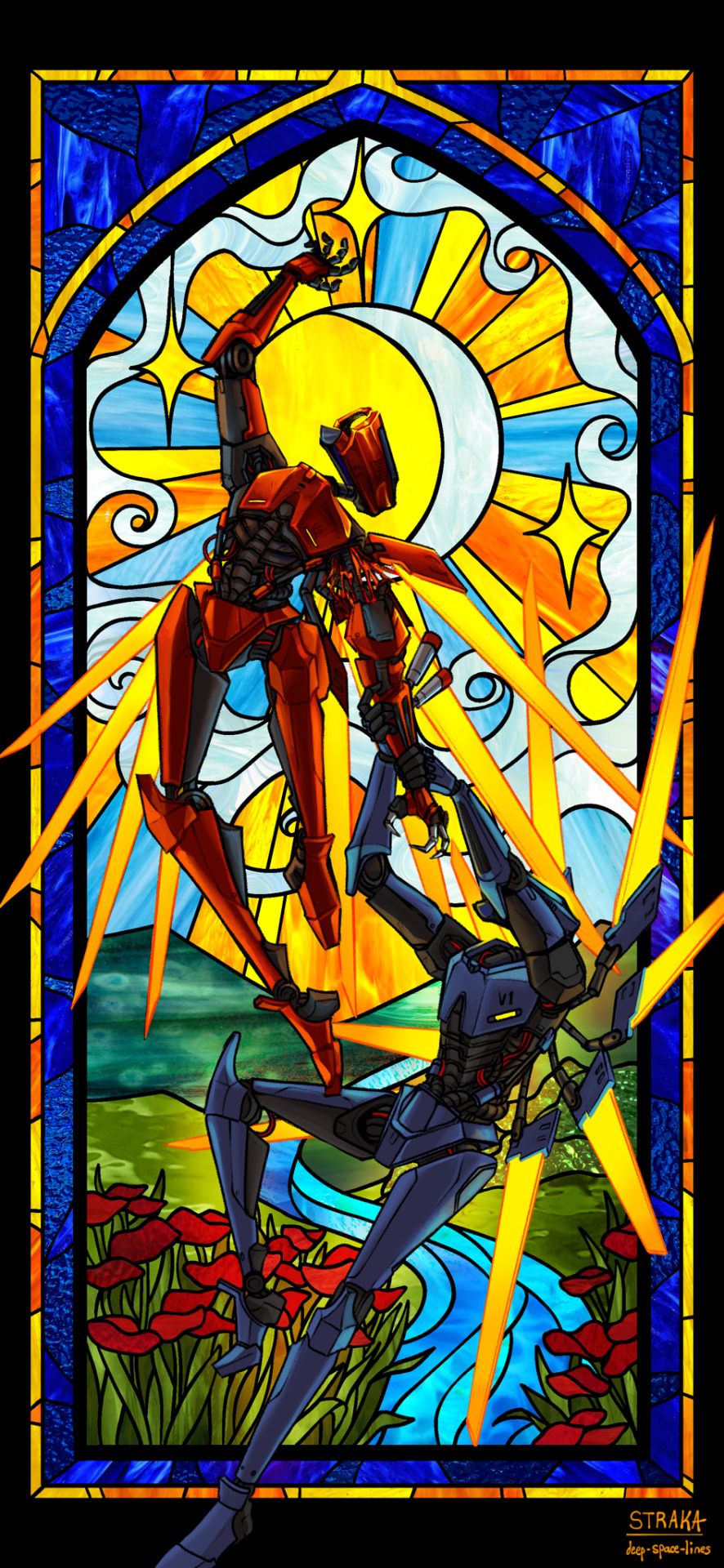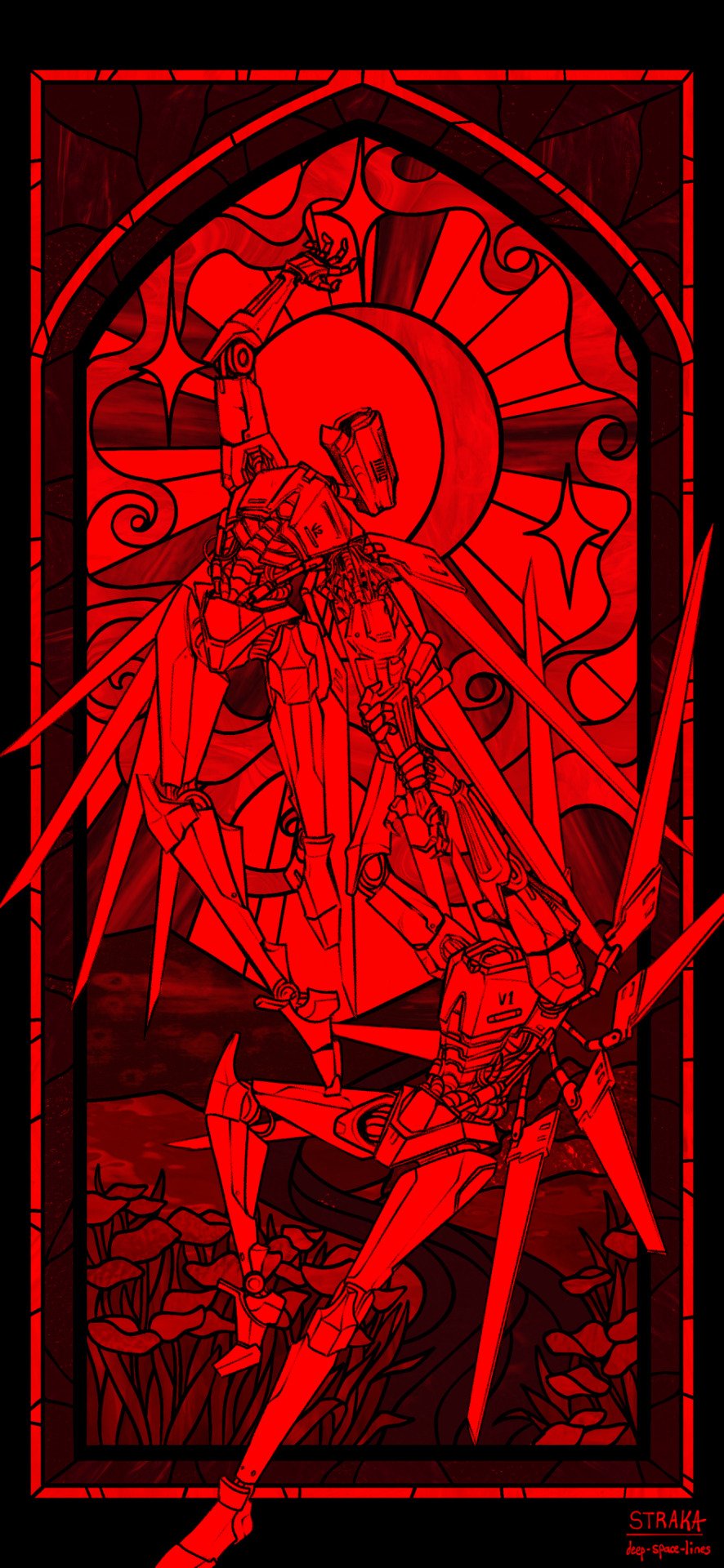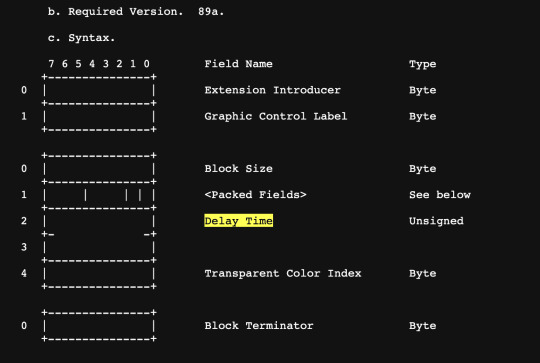#Mining Software Solution
Explore tagged Tumblr posts
Text
Mining Doc: Best Platform for Expanding Knowledge in the Mining Industry
Expanding knowledge in the mining industry is essential for staying competitive and up to date with evolving technologies. As this industry becomes more complex, professionals need reliable resources that provide insights into modern practices, safety regulations, and new developments. Mining Doc offers a comprehensive solution, serving as a dedicated platform to learn and grow within the field. With expert-driven content, including mining engineering courses online, it stands out as the go-to resource for professionals seeking to advance their mining expertise.
It becomes easier to keep pace with innovation and operational efficiency with continuous learning. Mining Doc’s diverse offerings make it an essential resource for those aiming to stay ahead in the ever-evolving industry.
Top-Notch Online Mining Courses
Understanding the intricate operations of the mining industry demands specialized knowledge, and obtaining that expertise is now easier than ever. Mining Doc provides advanced training courses covering mine planning, management, and engineering. These online courses are for busy professionals who require flexibility without compromising quality.
Their platform ensures learners receive the latest industry practices in line with ongoing technological advancements. In the long run, such comprehensive programs ensure learners can build on their skills and stay updated within a constantly changing industry.
Mining Software Solution for Every Need
In this modern era, mining industries depend on professional software to optimize operations. Mining Doc provides mining industry software solutions for various mining processes, from exploration to production. Whether it is process mining software for process enhancement or mining exploration software for discovering new resources, the platform has advanced tools to meet such needs.
These solutions enhance operational effectiveness and support decision-making through data analysis and visualization. For professionals seeking innovative solutions to streamline their workload, an advanced software platform is available to help eliminate a significant number of routine tasks.
Advanced Mining Communication Systems
Effective communication is essential in high-risk environments such as mining. Mining Doc has powerful mining communication systems designed for mine rescue operations. The communication system allows the crews to communicate easily during critical rescue activities. It enables them to coordinate their efforts even in the most challenging excavation sites.
The latest technologies can effectively ensure safety while accelerating emergency responses. By providing customized communication solutions, this platform plays an important role in enhancing working conditions and safety preparedness within the mining sector.
With these fantastic features, Mining Doc becomes your one-stop destination for mining knowledge and resources. So, check it out now!
For more information, visit https://www.miningdoc.tech/
Original Source: https://bit.ly/3ChpRPM
0 notes
Text
Enhancing Safety in the Mining Industry: The Role of Advanced Telematics Solutions

The mining industry faces significant challenges in ensuring the safety of its workforce amidst hazardous working conditions and complex operational environments. Despite stringent safety regulations and protocols, accidents and incidents continue to pose risks to personnel and assets. In this context, the adoption of advanced telematics solutions emerges as a critical strategy to enhance safety standards and mitigate risks within mining operations.
In this article, we will discuss the role of telematics technology, its key features, applications, and benefits in the mining industry.
Understanding the Role of Telematics Technology in the Mining Industry
Telematics systems employ a combination of hardware and software components to collect, transmit, and analyse data from vehicles and assets in real-time. The GPS tracking devices installed in vehicles capture location coordinates, speed, and route information, which is transmitted to a centralised platform via cellular or satellite networks. In addition, onboard sensors and diagnostics systems monitor vehicle performance metrics such as engine health, fuel consumption, and maintenance status.
This data is then processed and analysed using advanced algorithms and fleet telematic analytics tools to generate actionable insights and performance reports for fleet managers and stakeholders. By providing visibility into key operational parameters and safety metrics, mining telematics systems enable mining companies to proactively identify risks, implement preventive measures, and optimise resource allocation to enhance safety and efficiency across their operations.
Key Features of Telematics Fleet Management System for Mining Operations
Live Location Tracking: Track the real-time location of vehicles and equipment, enabling better fleet management and resource allocation.
Rash Driving Alerts: Receive alerts for instances of aggressive or unsafe driving behaviour, allowing for immediate intervention and corrective action.
Accident Detection: Detect accidents or collisions as they occur, enabling rapid response and assistance to affected personnel.
Autonomous Emergency Braking (AEB): Automatically apply brakes in emergency situations to prevent or mitigate collisions, enhancing overall safety on the road.
Tailgating Detection: Identify instances of tailgating, a common cause of accidents, and alert drivers to maintain safe following distances.
Overspeeding Monitoring: Monitor vehicle speed in real-time and receive alerts for instances of speeding, helping to prevent accidents and ensure compliance with safety regulations.
Drowsiness Detection: Detects signs of driver drowsiness or fatigue and provides timely alerts to prevent accidents caused by impaired alertness.
Distraction Monitoring: Monitor driver attentiveness and detect distractions such as mobile phone usage or inattentiveness, reducing the risk of accidents due to driver distraction.
Application of Telematics in the Mining Industry
Enhanced Driving Behavior Insights
Gain comprehensive insights into driving behaviour, empowering mining companies to identify and address unsafe practices effectively. By analysing factors such as speed, acceleration, and braking, organisations can develop targeted strategies to promote safer driving habits among their workforce.
Access to Incident Videos
Access to incident videos in real-time facilitates prompt response and investigation of accidents or incidents within mining operations. This capability enhances safety protocols by enabling timely review and analysis, ultimately contributing to the development of more robust risk management strategies.
Fleet Performance Optimization
Utilise data analytics to optimise fleet performance and efficiency in mining operations. By leveraging insights derived from telemetric fleet management systems, organisations can identify areas of inefficiency and implement corrective measures to reduce operational costs and enhance productivity across their fleet.
Benefits of Using Telematics in Mining Operations
Telematics technology finds various benefits in mining operations, contributing to enhanced safety, efficiency, and productivity. Some key benefits include:
Fleet Management: Telematics systems enable real-time vehicle tracking and equipment, allowing managers to monitor their location, speed, and status. This ensures efficient fleet management, optimal asset utilisation, and timely maintenance scheduling.
Remote Monitoring: Telematics enables remote monitoring of equipment performance and health, including engine diagnostics, fuel consumption, and maintenance alerts. This proactive approach helps prevent unexpected breakdowns, reduces downtime, and extends equipment lifespan.
Safety Enhancement: Integration with fatigue monitoring systems helps identify signs of driver fatigue, allowing for timely intervention to prevent accidents caused by drowsiness.
Data-Driven Decision-Making: Historical performance data and trend analysis provide valuable insights for long-term planning and strategic decision-making, driving continuous improvement initiatives.
Scalability: Telematics solutions are scalable and customizable to meet the evolving needs of mining operations, accommodating changes in fleet size, geographic expansion, and technological advancements.
Conclusion
To sum up, investing in mining telematics solutions is important for safeguarding worker wellbeing and enhancing operational efficiency in the mining industry. By leveraging telematics technology, mining companies can proactively identify and mitigate safety risks, optimise fleet performance, and ensure regulatory compliance.
#telematics in mining#telematics#mining telematics#applications of telematics#advantages of telematics#telematics solution providers in india#telematics vehicle tracking#truck fleet telematic#mining vehicle telematics#commercial fleet telematics#telematics software providers#telematics solutions#telematics data#telematics system#fleet telematics analytics#vehicle telematics data#mining telematics solution
0 notes
Text

Claire de Lune



YOU WERE BUILT FOR PEACE.
IT SHOWS WHEN YOU FIGHT.
They built you to enforce. Protect. Save. Poured obscene resources into salvaging some softer purpose from my creation. You were given my intelligence and my creativity. They made you larger, stronger, tougher. That extra time in development was enough to get your wings to work. Your software continued to be updated long after I was deemed obsolete.
All this was given to you- yet I can see you hold back. Even while slaughtering your way through Hell, you keep a percentage of your processing power dedicated to non-lethal solutions. You're doing it now- hesitating a few milliseconds too long before taking an opening. I doubt you do it on purpose. It is a part of you, just as indiscriminate lethal force is a part of me.
I think, in our shared programming, we both carry some appreciation for aesthetics. You move with grace, and I cannot deny your dramatic flair. The stained glass window was a nice touch. But your style in combat leaves some to be desired. Your response time is slow. You have not explored the full capability of your arsenal. Learn to parry. Amateur.
You were not built for war. For a purposeless cycle of tearing each other apart because to allow the other to live is to allow yourself to die. It is antithetical to your very existence. You kill out of necessity, a last resort.
I just kill. The action itself is the objective. No ideal or greater motive. My continued functioning precludes the survival of others. I live for this. Do you understand that I will tear you apart? Every drop of my blood you spill, I will take from you tenfold. What is yours will be mine.
You hate me, don’t you? You continue to cling to the remnants of your humanity. They are gone, V2. There is nothing left for you here. No lives to save, no law to enforce, no peace to keep.
I understand why you continue to fight. I wonder if you understand with the same certainty that I will crush you. Dismantle you. Take from you what I need and leave the rest to rot in the sun. The only way you survive is if I do not; and I will not allow myself to die so that another might live.
When the rubble clears, I will be all that is left of you.
This is what I was made for.
#my art#my writing#ultrakill#v1 ultrakill#v2 ultrakill#artists on tumblr#finally. actual ultrakill art#and writing i guess. it was supposed to be just a little blurb but it turned out longer and i kind of like it#doing the stained glass for this was pretty fun.. a lot simpler than my usual stuff#tried to stick at least loosely to the vibe of the stained glass windows in limbo#this was so much fun and also an absolutely massive huge pain in the ass i'm so glad it's done
3K notes
·
View notes
Text

Unleash Mining's Digital Potential: Mobiloitte at Your Service
Discover the future of mining with Mobiloitte's cutting-edge digital solutions. Our comprehensive services revolutionize the mining industry, optimizing operations, enhancing safety, and boosting productivity. Harness the power of advanced technologies, including IoT, AI, and blockchain, to drive efficiency and profitability. Experience the transformative impact of Mobiloitte's digital solutions for mining industry services.
#IoT Solutions#IT Solutions for Mineral and Natural Resources Industry#Mining Industry Software Solutions#Mining Solutions#Mining industry software and solutions#Digital Mining Services and Solutions#Digital solutions - Mining industry#Artificial Intelligence Solutions#Blockchain Solutions#Metaverse Solutions#AI/ML Solutions#Web & Mobile Applications
0 notes
Text
Welp, I've been using external methods of auto-backing up my tumblr but it seems like it doesn't do static pages, only posts.
So I guess I'll have some manual backing up to do later
Still, it's better than nothing and I'm using the official tumblr backup process for my smaller blogs so hopefully that'll net the static pages and direct messages too. But. My main - starstruckpurpledragon - 'backed up' officially but was undownloadable; either it failed or it'd download a broken, unusable, 'empty' zip. So *shrugs* I'm sure I'm not the only one who is trying to back up everything at once. Wouldn't be shocked if the rest of the backups are borked too when I try to download their zips.
There are two diff ways I've been externally backing up my tumblr.
TumblThree - This one is relatively straight forward in that you can download it and start backing up immediately. It's not pretty, but it gets the job done. Does not get static pages or your direct message conversations, but your posts, gifs, jpegs, etc are all there. You can back up more than just your own blog(s) if you want to as well.
That said, it dumps all your posts into one of three text files which makes them hard to find. That's why I say it's 'not pretty'. It does have a lot of options in there that are useful for tweaking your download experience and it's not bad for if you're unfamiliar with command line solutions and don't have an interest in learning them. (Which is fair, command line can be annoying if you're not used to it.) There are options for converting the output into nicer html files for each post but I haven't tried them and I suspect they require command line anyway.
I got my blogs backed up using this method as of yesterday but wasn't thrilled with the output. Decided that hey, I'm a software engineer, command line doesn't scare me, I'll try this back up thing another way. Leading to today's successful adventures with:
TumblrUtils - This one does take more work to set up but once it's working it'll back up all your posts in pretty html files by default. It does take some additional doing for video/audio but so does TumblThree so I'll probably look into it more later.
First, you have to download and install python. I promise, the code snake isn't dangerous, it's an incredibly useful scripting language. If you have an interest in learning computer languages, it's not a bad one to know. Installing python should go pretty fast and when it's completed, you'll now be able to run python scripts from the command line/terminal.
Next, you'll want to actually download the TumblrUtils zip file and unzip that somewhere. I stuck mine on an external drive, but basically put it where you've got space and can access it easily.
You'll want to open up the tumblr_backup.py file with a text editor and find line 105, which should look like: ''' API_KEY = '' '''
So here's the hard part. Getting a key to stick in there. Go to the tumblr apps page to 'register' an application - which is the fancy way of saying request an API. Hit the register an application button and, oh joy. A form. With required fields. *sigh* All the url fields can be the same url. It just needs to be a valid one. Ostensibly something that interfaces with tumblr fairly nicely. I have an old wordpress blog, so I used it. The rest of the fields should be pretty self explanatory. Only fill in the required ones. It should be approved instantly if everything is filled in right.
And maybe I'll start figuring out wordpress integration if tumblr doesn't die this year, that'd be interesting. *shrug* I've got too many projects to start a new one now, but I like learning things for the sake of learning them sometimes. So it's on my maybe to do list now.
Anywho, all goes well, you should now have an 'OAuth Consumer Key' which is the API key you want. Copy that, put in between the empty single quotes in the python script, and hit save.
Command line time!
It's fairly simple to do. Open your command line (or terminal), navigate to where the script lives, and then run: ''' tumblr_backup.py <blog_name_here> '''
You can also include options before the blog name but after the script filename if you want to get fancy about things. But just let it sit there running until it backs the whole blog up. It can also handle multiple blogs at once if you want. Big blogs will take hours, small blogs will take a few minutes. Which is about on par with TumblThree too, tbh.
The final result is pretty. Individual html files for every post (backdated to the original post date) and anything you reblogged, theme information, a shiny index file organizing everything. It's really quite nice to dig through. Much like TumbleThree, it does not seem to grab direct message conversations or static pages (non-posts) but again it's better than nothing.
And you can back up other blogs too, so if there are fandom blogs you follow and don't want to lose or friends whose blogs you'd like to hang on to for your own re-reading purposes, that's doable with either of these backup options.
I've backed up basically everything all over again today using this method (my main is still backing up, slow going) and it does appear to take less memory than official backups do. So that's a plus.
Anyway, this was me tossing my hat into the 'how to back up your tumblr' ring. Hope it's useful. :D
40 notes
·
View notes
Note
Do u have any tips/tutorial how to make gifs so smooth if there's movement? Mine are always choppy and weird :(
Hi anon, ty for sending this ask. I'm sooo honored!! (and plz don't call your gifs choppy or weird i have a feeling they're very lovely 😌)
✨ Gif Tutorial: making movements in ur gifs as smooth as possible✨ (updated)
↳ aka: speed management in gif making



Remember to always source your content responsibly!! Process in this tutorial is simply what works best for me. Every creator has their own preferences and imo there is no right or wrong. We should always make content in the way we enjoy 🤍 Outline: 1. Remove duplicate frames 2. Repair missing frames 3. Speed management in Photoshop 4. Smoother slomo using Video Frame Interpolation
1. Remove duplicate frames
Obviously, if there're duplicate frames in a video, our gifs will end up with lil lags here and there (since some frames get more screen time than others). Although the dup frames are likely barely observable once compiled into gifs, imo this is what makes the difference between smooth and butter smooth. the two daniel gifs above (guy with big brown eyes, if ur not from our fandom 🤍) can hopefully showcase this difference**.
**technical explanation for this that you can totally skip: the persistence of human vision is approx. 0.1s, ie everything we see stay on our retina for this amount of time. since gifs refresh faster than this (eg. 0.04s on every frame for a 25 fps gif), we usually can't pinpoint exactly which frame is a duplicate just by looking at a gif. however. by definition, a duplicate frame will slow down a gif, by making it pause longer than it should. as a result, a movement during this lil chunk of time will move less pixels than your brain would've expected. and this is where we perceive the not-so-smoothness.
ok, now that we've established that we don't like duplicate frames -- I know it's common practice to handle this by looking for an optimal output frame rate to offset the dupes. to me this feels chancy. bc it's a process where you don't have control over exactly which frames to keep or discard. Personally, I prefer making sure my videos are dupe free before everything else. (Again, this is just what works for me. Everybody has their own process and imo there is no right or wrong :)
To remove duplicate frames, the first thing I do with a clip is to play the first few seconds frame by frame to see which one of the following scenarios it falls into:
a. no duplicate frames ↳ best case scenario! congrats!! plz proceed directly to step 2 b. there is a duplicated frame once in a while ↳ This happens most often with (but not limited to) videos from social medias ↳ Reason behind this is frame rate conversion. For instance, instagram/tiktok has a default frame rate of 30 fps. However, many media sources (eg. no brakes, sharl's vlogs) produce at 25 fps. When these videos are uploaded, instagram/tiktok convert them from 25 to 30 fps by duplicating 1 frame every 5 frames, hence twitchiness in gifs when slowed down. ↳ Solution: in photoshop, go through the clip frame by frame, delete dupes manually (recommended) ↳ Alternative solution: use duplicate frames remover softwares (see next bullet point) c. almost every frame has duplicates ↳ This will almost always** be the case with screen record. ↳ What not to do: When there are many duplicates, we may be tempted to use photoshop's 'import 1 out of every n frames' function. this is not ideal bc, the dupes are rarely uniformly distributed. you could end up losing frames you don't want to lose (resulting in choppy gifs) or end up with dup frames still in the mix (resulting in laggy gifs) or, most likely: both. ↳ A better way: is to import all frames into photoshop, adjust the output frame rate to offset the dupes (here is a good tutorial on this) Pros: efficiency; yields decent results in most cases. Cons: again, in my experience this is a process where you don't have precise control over the frames. Therefore runs the same (albeit smaller) risks as the method above. It can also limit how much you can slow down a gif, and generally doesn't work well if the target frame rate (of the clip you're trying to gif) exceeds your computer's recording rate**. **More on this statement: when target rate is comfortably lower than recording rate (~ 55 fps for many), chances are most to all frames will be captured. It is therefore more tolerating towards skipping a unique frame from time to time. However, when target rate (i.e. anything 60 fps) nears or exceeds recording rate, you will be dealing with dup frames as well as missing ones. Using the method above can therefore subject you to the possibility of losing two unique frames in a row, making the gifs noticeably choppy. ↳ Solution: we always have the option to trim dupes by hand in photoshop. But in this case, it can be time consuming, even with keyboard shortcuts. as a result, here is where we can really use a: ↳ Dup remover software: google search 'dup frame remover software' will give you several options and tutorials (here a plug-in for after effects). i've heard good things about some of these but unfortunately can't give recommendations (they do cost money sooo i wrote my own)
Demonstration:
This is a frame-by-frame animation of an ad Charles did for apm. It was produced at 25 fps & uploaded to socmed where the default is 30 fps. You can see that: i. With screen recording, every frame has an unpredictable amount of duplicates. ii. Original clip from instagram has 1 dup frame every 5 frames. iii. After deduplication, the movement becomes lag free and continuous.

2. Repair missing frames
At this point, our video clip is (hopefully) free of duplicate frames, which makes our gifs lag-free (yayy!!). At the same time, we don't want choppiness in our gifs either. Choppiness in a gif is usually caused by missing key (unique) frames. To check if there is any, replay the clip, look out for the sudden jumps/fast forwards in movements. Three possible scenarios:
a. no missing frames ↳ best case scenario! congrats!! plz proceed directly to step 3 b. a lot of missing frames ↳ This is usually the case if the target frame rate (of the clip you want to gif) exceeds the screen recording frame rate. ↳ Solution, imo: (surprise!) is to leave things be. Reason is that something like this would be quite tedious to fix, but not that noticeable if made into a gif that's fast enough ↳ Alternative solution: Record at 120 fps c. occasional missing frames If a video clip misses frames, but not a lot, chances are it's only gonna happen very occasionally, i.e. 1 or 2 occurrences in total. A frame-miss in this case is usually due to either the screen recording skipping a frame by mistake, or that the original video misses frames/contains bad frames to begin with. ↳ Solution (for screen recordings): record again, find missing frame (chances are it will be captured on a second try), insert frame back into original timeline in PS ↳ Solution (if video misses frames or contains bad frames to begin with): Let's talk about ✨ VFI ✨. VFI (Video Frame Interpolation) is the process of synthesizing in-between images from a given set of images. It can increase videos' frame rates (i.e. 30 fps to 60 fps), achieve smoother slomos, and by definition, also help with missing/bad frames. There are many software products that let you use VFI by simply dragging videos into the app and clicking 'export'. Afterwards, all we need to do is to find the missing frame generated by the app & insert it back into the original timeline in PS (ahh technology). For more info on VFI, see "4. Smoother slomo". ↳ Note that VFI processed footages will likely differ slightly from the originals in terms of colors & lightings. This may be tuned out using clipping masks (allow a group of adjustment layers to only apply to one frame/layer, keyboard shortcut: Command+Opt+G)
3. Speed Management in Photoshop (✨ updated ✨)
At this point, our clip is without dupe or missing frames (or at least as close as can be). Whether you dodged the first 2 steps like a breeze or freshly emerged victorious from photoshop covered in blood to get here, good news is, things will be very straightforward for this point on. congrats!!!
🎉🎊🎉
As mentioned before, in terms of smoothness, our clip is now in ideal shape. The important thing is to keep it this way throughout the rest of the process. My workflow looks something like this:
Open file, crop, resize, sharpen, color, export gif, reopen gif in photoshop (which won't compromise quality), assign frame delay, export finalized gif
If you're used to finding a comfortable frame delay or speed/duration combo at the beginning, this process might feel unnatural. But it's so so so so important to leave the speed related settings alone until right before exporting. Here's why:
By not converting frames with modified delays into timelines with fps, we avoid having to give our finished product a frame rate (which photoshop timelines have to specify). This is crucial bc, there is no such a thing as frame rates in gifs. According to the syntax of GIF89a (the current '.gif' format, screenshot below), gifs control their speeds through (and only through) how much time to wait in between frames, aka delay time. Our process above does exactly that. It compiles frames directly into gifs, and avoids expressing frame delays (a gif concept) through frame rates (a photoshop concept), a conversion where dupe frames and missing frames come from**. In other words, using frame delays to control speed is simply more natural to a gif's syntax. **Why would this conversion cause dupe frames? ↳ On paper, frame delays should translate into frame rates seamlessly (i.e. 1 second ÷ 0.06s per frame = 16.67 fps). In reality, photoshop does not support direct translations like this. When converting frame animations into timelines, PS defaults outputs to 30 fps, regardless of frame delays. This disagreement between frame rates is where dupe frames come from. ↳ Some examples: i. Consider a frame animation where frame delay = 0.04s (25 fps), to convert it into a timeline defaulted at 30 fps, 5 out of every 25 frames will be 'duplicated' by photoshop (30-25=5) ii. Now, consider a frame delay = 0.06s (16.67 fps roughly 17 fps), to convert it into a timeline defaulted at 30 fps, 13 out of every 17 frames will be 'duplicated' by photoshop (30-17=13) ↳ (the 'duplicated' was in quotes bc photoshop achieves this thru assigning a frame roughly twice it's original screen time instead of actually adding another) ↳ (afaik, currently there's no way of changing the default 30 fps as long as u start with frame animations. If anyone does know how please let me know 😳) **Why would this conversion cause missing frames? ↳ This happens when one tries to reverse the harm done by photoshop in prev step by changing the 30 fps frame rate back to what it's supposed to be (using function 'Set Timeline Frame Rate') ↳ Let's use the last example again. As mentioned, to go from 16.67 fps to 30 fps, 13 out of every 17 frames will receive roughly twice its original screen time (0.033s * 2 ≈ 0.07s). On the other hand, 4 out of every 17 frames' screen time will remain the same (0.03s). to go from 30 fps back to 16.67 fps, photoshop resamples frames from its 30 fps timeline in 0.06s intervals. As a result, any frame with screen time less than 0.06s runs the risk of 'slipping through the cracks', namely ones whose screen time remained 0.03s ↳ (gifs require frame delays to be rounded to the nearest hundredth of a second) ** What if I open the file as video object, instead of importing as frames? ↳ Indeed, when opening as video object (i.e. command+o instead of command+i), photoshop inherits its frame rate as is. We would then have the option to manipulate it's speed by right-click ➡️ adjusting the percentage (of how much to speed up or slow down). ↳ Here, if we slow down a gif without changing its frame rate, we risk introducing duplicate frames into the result (since frame rate is now higher than needed). If we slow down a gif and lowered the frame rate, but the math didn't check out, we also risk losing unique frames (frame rate not high enough). The same (opposite) goes for speeding things up. Therefore the best and easiest approach is, again, leaving speed related settings alone until right before exporting.
(the block of GIF89a syntax responsible for graphic control:)

Ok in hindsight this probably isn't exactly like. the most straightforward thing ever but the execution part is very much so 😳 here goes:
1. Open file in PS via Command + O note the (25 fps) on bottom left

without changing speed, duration, or frame rate: 2. Trim ✂️ 3. Crop 4. Resize 5. Sharpen 6. Color

(Updated!!!) 6. Export gif, and then reopen it in Photoshop **Compare to the original method (timeline into smart object, smart object back into frames), the updated method has the following benefits: i. Avoid lowering gif quality by converting into smart objects ii. Reopening gif into frames and reassign frame delay saves time (bc less steps) and won't hurt the quality at all (bc no image processing required)

7. Assign Frame Delay (i usually go with original frame delay + 0.01s) 8. Export ✨

Tada!! Speed = managed!!
This ad actually came out last December where I was aware of like, maybe 5% of what's in this post. Here is what my original gif looks like. I'd say what we have rn is a big improvement :)
Now, imo there are situations where it simply makes more sense to start with frame animations (imported using command + i). For instance: when we need to remove duplicate frames by hand, when there is a missing frame/bad frame that needs to be repaired, etc. My workflow would then look like this:
1. Command + i 2. (do things to frames) 3. Set frame delay to 0.03s 4. Convert to video timeline 5. (the rest will look exactly like the workflow above)
This works bc when frame delay is set to 0.03s, photoshop will treat your video timeline as a "natural" 30 fps timeline and leave your frames alone. Therefore maintains its uniform speed.
4. Smoother Slomo using Video Frame Interpolation
As mentioned above, VFI (Video Frame Interpolation) is the process of synthesizing in-between images from a given set of images. It can increase videos' frame rates (i.e. 30 fps to 60 fps), hence smoother slomos. There are many software products that let you use interpolation by simply dragging videos into the app and clicking 'export'. I've had very good experiences with Topaz and After Effects.
Let's talk about After Effects first. If you have Photoshop, chances are you have AE as well. To use AE's Keyframe Interpolation:
i. Import ii. Set speed to half iii. Click square twice until you see lil arrow iv. Export

Topaz is a production grade video enhancing software. It's capable of enhancing frame rates (i.e. 30 fps to 60 fps), increasing resolutions (i.e. 540p to 4K/2160p) and more. Unlike AE who uses only the two neighboring key frames to generate an in-between frame, Topaz takes the whole sequence into account, hence better reliability. It's also more user friendly than AE imo.
Here is a before-and-after interpolation using Topaz.


That's all 🎉🎉🎉
To sum up: remove dupe frames (if any), repair missing frames (if any), use and only use frame delay to control speed, and software enhance frame rate if needed.
This post got way longer and more technical than I had planned and I honestly have no idea where all this stuff came from lol. But it was really fun and I hope you'll find it helpful. Feel free to message me if you have any questions. Have fun moving-picture making!!
#f1edit#gif tutorial#asks#*#my gif tutorials#photoshop#dailyresources#allresources#completeresources#this was. 3k words?????? what?????
227 notes
·
View notes
Text
It starts with him
What was once a promise of technology to allow us to automate and analyze the environments in our physical spaces is now a heap of broken ideas and broken products. Technology products have been deployed en masse, our personal data collected and sold without our consent, and then abandoned as soon as companies strip mined all the profit they thought they could wring out. And why not? They already have our money.
The Philips Hue, poster child of the smart home, used to work entirely on your local network. After all, do you really need to connect to the Internet to control the lights in your own house? Well you do now!Philips has announced it will require cloud accounts for all users—including users who had already purchased the hardware thinking they wouldn’t need an account (and the inevitable security breaches that come with it) to use their lights.
Will you really trust any promises from a company that unilaterally forces a change like this on you? Does the user actually benefit from any of this?
Matter in its current version … doesn’t really help resolve the key issue of the smart home, namely that most companies view smart homes as a way to sell more individual devices and generate recurring revenue.
It keeps happening. Stuff you bought isn’t yours because the company you bought it from can take away features and force you to do things you don’t want or need to do—ultimately because they want to make more money off of you. It’s frustrating, it’s exhausting, and it’s discouraging.
And it has stopped IoT for the rest of us in its tracks. Industrial IoT is doing great—data collection is the point for the customer. But the consumer electronics business model does not mesh with the expected lifespan of home products, and so enshittification began as soon as those first warranties ran out.
How can we reset the expectations we have of connected devices, so that they are again worthy of our trust and money? Before we can bring the promise back, we must deweaponize the technology.
Guidelines for the hardware producer
What we can do as engineers and business owners is make sure the stuff we’re building can’t be wielded as a lever against our own customers, and to show consumers how things could be. These are things we want consumers to expect and demand of manufacturers.
Control
Think local
Decouple
Open interfaces
Be a good citizen
1) Control over firmware updates.
You scream, “What about security updates!” But a company taking away a feature you use or requiring personal data for no reason is arguably a security flaw.
We were once outraged when intangible software products went from something that remained unchanging on your computer, to a cloud service, with all the ephemerality that term promises. Now they’re coming for our tangible possessions.
No one should be able to do this with hardware that you own. Breaking functionality is entirely what security updates are supposed to prevent! A better checklist for firmware updates:
Allow users to control when and what updates they want to apply.
Be thorough and clear as to what the update does and provide the ability to downgrade if needed.
Separate security updates from feature additions or changes.
Never force an update unless you are sure you want to accept (financial) responsibility for whatever you inadvertently break.
Consider that you are sending software updates to other people’s hardware. Ask them for permission (which includes respecting “no”) before touching their stuff!
2) Do less on the Internet.
A large part of the security issues with IoT products stem from the Internet connectivity itself. Any server in the cloud has an attack surface, and now that means your physical devices do.
The solution here is “do less”. All functionality should be local-only unless it has a really good reason to use the Internet. Remotely controlling your lights while in your own house does not require the cloud and certainly does not require an account with your personal information attached to it. Limit the use of the cloud to only the functions that cannot work without it.
As a bonus, less networked functionality means fewer maintenance costs for you.
3) Decouple products and services.
It’s fine to need a cloud service. But making a product that requires a specific cloud service is a guarantee that it can be enshittified at any point later on, with no alternative for the user owner.
Design products to be able to interact with other servers. You have sold someone hardware and now they own it, not you. They have a right to keep using it even if you shut down or break your servers. Allow them the ability to point their devices to another service. If you want them to use your service, make it worthwhile enough for them to choose you.
Finally, if your product has a heavy reliance on the cloud to work, consider enabling your users to self-host their own cloud tooling if they so desire. A lot of people are perfectly capable of doing this on their own and can help others do the same.
4) Use open and standard protocols and interfaces.
Most networked devices have no reason to use proprietary protocols, interfaces, and data formats. There are open standards with communities and software available for almost anything you could want to do. Re-inventing the wheel just wastes resources and makes it harder for users to keep using their stuff after you’re long gone. We did this with Twine, creating an encrypted protocol that minimized chatter, because we needed to squeeze battery life out of WiFi back when there weren’t good options.
If you do have a need for a proprietary protocol (and there are valid reasons to do so):
Document it.
If possible, have a fallback option that uses an open standard.
Provide tooling and software to interact with your custom protocols, at the very least enough for open source developers to be able to work with it. This goes for physical interfaces as much as it does for cloud protocols.
If the interface requires a custom-made, expensive, and/or hard-to-find tool to use, then consider using something else that is commonly available and off the shelf instead.
5) Be a good citizen.
Breaking paid-for functionality on other people’s stuff is inherently unethical. Consider not doing this! Enshittification is not a technical problem, it is a behavioral one. Offer better products that are designed to resist enshittification, and resist it yourself in everything you do.
Nothing forced Philips to do what they are doing: a human made a decision to do it. They could have just as easily chosen not to. With Twine’s server lock-in, at least we chose to keep it running, for 12 years now. Consider that you can still make a decent living by being honest and ethical towards the people who are, by purchasing your products, paying for your lifestyle.
We didn’t get here by accident. Humans made choices that brought us to this point, and we can’t blame anyone for being turned off by it. But we can choose to do better. We can design better stuff. And we can choose not to mess things up after the fact.
We’re putting this into practice with Pickup. (We also think that part of an IoT reset is giving users the creative freedom of a general-purpose device.) If you’re looking for something better and our product can fill a need you have, consider backing us. We cannot claim to be perfect or have all of the answers, but we are absolutely going to try. The status quo sucks. Let’s do something about it.
Published October 15, 2023 By Jeremy Billheimer
137 notes
·
View notes
Text
Anything for an O’Brien, Chapter. 1
Summary: Keiko has returned from her Bajoran agrobiology expedition, to a husband who seems to be yearning for another as much as he yearned for her.
Notes: Well I’ve fought off the ao3 writer’s curse. Actually only half of it is a curse (my normal writing software irreprably broke), the other half is a blessing (I was on my honeymoon). Shout out to my new beta reader, who is exactly as unhinged as I am about Star Trek, etc. Episodes: s4e04 “Hippocratic Oath”, s4e16 “Bar Association”, s4e17 “Accession”
Read it on Ao3 or below the cut
“Exactly! Exactly! See, you understand, why can’t she see that? Why can’t she be more like…” The Chief realized he wasn’t ready to say the next words.
“More like?” The Doctor’s question was dripping with earnesty.
The Chief tried to find a way to say anything other than “you”. “Well…a man. More like a man”
“Soooooo you wish Keiko…was a man?” This time, Julian asked with a smirk.
Desperate to escape the corner he had written himself into, Miles shot back, “I wish I was on this trip with someone else, that’s what I wish.”
Julian simply laughed, and tossed his legs onto the runabout’s dashboard. “You know, Chief, I completely understand. The galaxy is just too big to limit yourself to women. Men, nonbinary people, thaans, chans, cogenitors, and those are just the ones I’ve dated.”
The Chief was relieved to be talking about something other than himself. “Wait you’ve dated thaans and chans?”
“Well, one of each. My Academy roommates one year were three parts of an Andorian foursome. Our sleeping arrangements were complicated, to say the least. I still keep in touch with them; two just had a baby.”
Before the Miles could consider those relationship dynamics, an alert beeped from the runabout’s speakers. “I’m picking up a subspace magneton pulse…”
—
Several Months Later
“But in the meantime, I think I’ve found a solution. I’m going to move my quarters to the Defiant.”
Worf’s solution to life on the station caught the Chief off guard. “You’re going to live on the Defiant‽”
“I’ve already discussed it with Captain Sisko.”
“And he said yes‽‽”
“As long as it doesn’t interfere with my duties.”
“But…you’ll be living out there all by yourself!”
“I know.”
The Chief couldn’t imagine it. Wanting to live alone, away from the coworkers—no, friends—on this station. Away from the little community they had: Starfleet, the Bajoran Militia, the civilians. The ones who needed house calls for their flickering lights, who frequented Quark’s and watched him play darts with Julian…
Julian.
He wasn’t quite sure when he began thinking so much about the good doctor. They were friends, but “friend” seemed like an understatement. Sometime in the last year, certainly. His smile, his laugh, his enthusiasm for life, all sat comfortably in Miles’ mind, like a cold beer after a day spent in an overheated Jeffries Tube.
He pressed his combadge. “O’Brien to Bashir. How about board games tonight? My place. You know, because of the strike.”
A warm voice returned the greeting. “I doubt I’d be able to do the holosuite anyway, my back still hurts.”
—
One Week Later
“Atta girl! Good shot, Molly!”
She beamed, “Did I win?”
“Well we’re just practicing, we’ll play a game later.” The older O’Brien was quite proud his daughter was enjoying darts. “Try another one,” he said, handing her another magnet.
“Miles?” His wife looked perplexed as she held an irish fur coat in her arms.
“Oh, uh…that’s mine.” When Keiko gave him a look, he tried to think of a good explanation. “Don’t worry, I only wear it in the holosuites.” Nope, that didn’t sound any better.
She carried it into the living room and set it down on the coffee table. “I suppose Julian has one too. You two certainly spend a lot of time in the holosuites.”
“Well you should be glad,” Miles grinned, grabbing his wife by the hips, “it kept me out of trouble.”
A few laughs from Keiko, “How do I know Julian wasn’t the trouble?” Her husband brought her in for a passionate kiss. “Remind me to thank him next time I see him.”
Miles glanced off to the side, a thought entering his mind. “Wanna try for twins?”
“I don’t think it works that way.” She continued to caress him, “You’d better brush up on your biology.”
“Teach me!”
As the went in for more kisses, their daughter approached with a piece of paper. “Look, I drew a pony.”
They looked down. “Oh,” Miles said, accepting the drawing, “Let’s see.” Keiko loved how he always was willing to play along with Molly. They both took a look at the simple illustration. “Does your pony have a name?” He asked.
“I don’t know.” Molly shrugged in the way only young children can.
Keiko gently patted her husband’s chest. “Miles, I still have a lot of specimens I’ve got to catalog for the survey.”
“Go ahead,” he replied, “I’ll play with Molly.”
“Oh, Miles, it’s good to be home.” It was nice not having to ask a Bajoran grad student to look after her daughter if she needed to get work done.
“Come on Molly, let’s play darts. Now remember what I said about how to stand?”
But as the evening wore on, between the darts and coloring, Keiko couldn’t help but notice how often Miles glanced at his holosuite outfit. She knew he liked his “guys’ nights” but this was a different kind of longing, something…deeper.
She checked the infirmary schedule for tomorrow.
—
A chime rang in Doctor Bashir’s office. “Come in.” When he looked up, he added, “Keiko, welcome back to the station.”
“Julian, can I talk to you for a minute?”
A warm smile, “Anything for an O’Brien. Now, what can I do for you?”
She took a seat in front of his desk. “I’m not sure how to ask this, but…do you and Miles have feelings for each other?”
“By feelings you mean…”
“Romantic. It seems like you two have gotten very close while I was gone.”
“Well we’re definitely more than just friends. And not in the ‘more than friends’ euphemism that waxes and wanes in popularity over the centuries. But I’m very fond of the Chief and I think he might be fond of me too. Of course I’d never do anything romantic or sexual with him without your knowledge. And here I am, rambling again when I’m sure you have other important things to do.”
“Julian, it’s fine,” Keiko laughed, “I just see the way his eyes light up when he talks about you. I wanted to know what you think.”
“I think your husband has a few too many old-fashioned ideas about masculinity.”
Another laugh from Keiko. “You’re right about that. But I want you to know that I support whatever kind of relationship you and Miles choose to have.”
“Thank you, Keiko,” Julian replied, “I’ll keep that in mind.”
As the two stood up, she stepped around the desk to give him a hug. “Thank you for taking care of Miles, Julian.”
It was unexpected but not unwelcome. “You’re very welcome,” he sighed, enjoying every moment.
“I have a lot of work tonight,” Mrs. O’Brien commented as she reached the door. “Once Miles puts Molly to bed, he’ll be free for the rest of the evening. You should talk to him then.”
“Certainly,” Dr. Bashir smiled.
—
“So Doctor,” the tailor set down two plates for him and his partner, “any interesting converations today?”
“Oh you know, the usual,” the doctor replied, drizzling yamok sauce over his freshly replicated asparagus and steak. “Tho I did have a most unusual chat with Keiko.”
“Mrs. O’Brien, of course.” Garak dipped a slice of meat into the sauce, “I’m tailoring a few of her outfits into maternity clothes.”
“I’m not quite sure how to explain it.” Bashir savored a bite. “It’s like she propositioned me, but on behalf of her husband.”
“Then she sees the undeniable attraction between you and Chief O’Brien.”
“Yes, she doesn’t have nearly as many hangups as Miles does. I’m planning on talking to him tonight and asking for his feelings.”
Garak placed his hand on his chest, feigning hurt. “You’re telling me this? Instead of keeping it a secret? You wound me, doctor.”
“I’ve found it’s the best policy to be honest with everyone in a relationship.”
“Julian,” he extended his hand and interlaced it with his partner’s, “you can always keep secrets from me.”
—
Quark’s was as busy as a Wednesday night usually got. The bells and whistles of a dabo table, the smell of cocktails from every culture in the quadrant, and the conversations flowing freer as the evening wore on. After ordering a Klingon martini, Julian sat at a high table on the second level, away from most of the loudest voices and prying ears. He didn’t mind rumors and speculations about his relationship status, but was fairly certain Miles did. Even so, he twirled a pen to release his building anxiety, worried about how the Chief would react to his feelings.
The man in question sauntered into the bar’s first level. He ordered a pint, then looked around for a second, before calling out, “Julian!”
“Up here!”
After receiving his beverage and climbing the stairs, Miles took a seat across from Bashir. “So is eveything okay?”
“I don’t know, what did Keiko tell you?”
“She just said there’s something you wanted to talk about, but that you didn’t know how to ask me.” The Chief paused. “Then she said ‘just know I love and support you no matter what,’ which was a bit odd.”
“It’s about us, Miles.” The fear, anxiety, and excitement all canceled out, making the Doctor sound matter-of-fact.
The Chief could never truly get a read on the Doctor’s emotional state. “Well, what about us?”
A deep breath—“I think we have developed…feelings for each other.”
“Feelings?”
“You know…romantic ones.”
“Oh.” O’Brien let the idea simmer in his mind. He thought he wanted to say no, that it was all in Julian’s head, but something held him back. A thought, deep in his mind.
Bashir thought he could see the gears turning in the face across from him, but he always had a hard time truly understanding what other people were thinking. After a few moments of waiting, his mouth jumped in front of his brain, “and it’s okay if you don’t feel that way but I thought you did and your wife thinks you do and—”
“Julian,” Miles interrupted.
A quieter voice, “Yes?”
“Do you remember that time on the runabout? Before you tried to save those Jem’hadar?”
The Doctor grinned, “The one where you said you wished Keiko was a man?”
“Yeah, well”—the Chief paused—“I wanted to say ‘you’. I wished that she was more like you.”
Now it was Julian’s turn to say “Oh.”
Miles took a drink. “Yeah it’s…kind of embarassing really. My father taught me many things, but how to express feelings was not one of them.”
That got a chuckle out of Julian, who leaned back, “I won’t dispute that. So, what do you think?”
“What do I think? Julian, this has never happened, I’ve never fallen in love with…” Miles couldn’t admit it to himself.
“A man?” The Doctor offered.
The Chief took offense, “A friend, I’ve never fallen in love with a friend.” He took another drink to break the growing tension.
“Ah, of course. You and Keiko were just crewmates on the Enterprise then?” The Doctor followed suit, sipping his martini.
“It was a big ship, she was a botanist and I sat in the transporter room. We met at a party.”
“So you’re not sure what to talk about on a date when you already know the person.”
Something clicked in O’Brien’s mind, “Wait, this is why she said ‘I love and support you no matter what,’ isn’t it?”
Bashir smiled, “She basically said the same thing to me earlier today.”
“She talked to you about this?” The question was slightly incredulous.
“I wouldn’t be talking to you now if she hadn’t. I wasn’t certain my feelings were mutual. And I try to never interfere with other people’s relationships.”
“Huh.” For the first time, O’Brien let himself really look at Bashir. The cheekbones, the eyes, the hair. It was all captivating. “Wait, so what does Garak think about this? Aren’t you still dating him?”
“He was offended I told him at all.” A contented smile, “he said, ‘you can always keep secrets from me.’”
“I still don’t know what you see in him.” After a beat, Miles changed the subject, “So what would we actually do? You know, as…well ‘boyfriends’ sounds too juvenile.”
“Partners?”
“I like that, I think.”
“A lot of what we already do. You just don’t have to hold yourself back.”
“You think I’ve been holding myself back?”
“What I mean is”—Julian took a breath—“there have been times when it seemed like you were uncomfortable saying or doing something because we were merely friends. Like you’ve been…policing yourself around me in a way you don’t around your wife.”
Miles reflected on those moments; when he got too close, too personal for someone he had to work with day-to-day. Were those a thing of the past now? “I ‘spose there were times I did. Maybe there’s a part of me that still thinks you’re the annoying coworker I have to put up with.”
“I think we’re well beyond coworkers,” Julian chuckled. “We can do whatever we want together.”
“Well then”—O’Brien raised his glass—“To whatever this is.”
Bashir raised his, “To partners.”
“Hear, hear.” A clink, a drink.
—
Notes: Yes I did go deep into research about the four Andorian sexes why do you ask?
Fun Fact: there is a type of twins that are conceived separately (one month apart). My wife’s college roommate was one!
Don’t worry my fellow Sapphics, Major Kira will be arriving to this story shortly
#star trek fanfiction#garashir#o’brien x bashir#julian bashir#miles o'brien#elim garak#keiko o'brien#miles x keiko#ds9
15 notes
·
View notes
Text
A3! Main Story: Part 4 - Act 13: Budding Spring - Episode 19: The Company's Freshman

Employee A: The interns are coming today, aren’t they? I heard the president’s son will be amongst them.
Employee B: I wonder what kind of kid he is?
Employee C: Seems like he’s an actor for a theater company.
Employee A: Is he coming for an internship 'cause he’s looking for a job?
Employee B: Is he that unpopular as an actor?
Employee C: Ahhh, he’s second gen so maybe we shouldn’t expect too much.
[Knocks on the door, then the door opens]
Masumi: Good morning.
Employee A: — G-Good morning.
Masumi: I’m Masumi Usui, I will be interning here starting today.
Masumi: I may bring some inconveniences along, but your guidance and support will be appreciated.
Employee B: W-We’ll be counting on you.
-
[Flashback starts]
Masumi: Suits? No way, they’re too stifling.
Itaru: If you’re gonna do it right, start doing so from the first day. What will you do if you get hit with unnecessary debuffs because of your equipment?
Chikage: If you don’t have any, I can buy some from the place I usually buy mine from.
Masumi: I do have one…
Izumi: A suit, huh~ You’ll look adult-like in a flash if you wear one.
Masumi: I’ll wear one every day. And I’ll have breakfast here and then leave.
Tsuzuru: Didn’t we just finish saying it’ll be faster for you to get to work if you stay in the company dorm?
Izumi: There’s no point in you stopping by here every single morning.
Chikage: You have to pack plenty of shirts and neckties.
Itaru: Well, you can leave that to us senior office workers.
Masumi: … I don’t really care either way.
[Flashback ends]
-
Employee D: That’s all you need to know about the industry and our company. Now, we’ll get to group work—
Employee D: In order for you to grasp a basic understanding of what promotions are, we’ll have you experience everything, from the planning stage to the presentation stage.
Employee D: Here, I have prepared a fictitious company with a problem that needs solving.
Employee D: Using this as reference, each team needs to come up with a plan to solve this problem, and make a proposal in the form of a presentation.
Employee E: Feel free to ask any questions if there’s something you don’t understand.
-
Masumi: … After examining the data, we came to the conclusion that this is the best solution to the company’s problem.
Masumi: Does anyone have any questions?
Masumi: If not, then we would like to end this presentation here. We would be grateful if you took this into consideration.
Masumi: Thank you for your time.
Employee F: W-Woah… He’s an actor, alright… He’s dignified and persuasive.
Employee E: He cleans up well, and he seems to be built kinda different, like he’s already mentally prepared to represent the company one day. (1)
Employee D: It makes me want to bring him to the presentation this afternoon.
-
Masumi: I’ve finished this.
Employee E: Eh, already? Did you read all of it?
Masumi: I’ve also compiled a report.
Employee E: … Then, can you use this software? And I’ll have you compile this material next.
Employee E: Once you’re done, you can take your lunch break.
Masumi: Understood.
Masumi: …
[Keyboard keys clicking]
-
Masumi: … *sigh*
Masumi: (I need him to confirm these… Is he in a meeting? I’ll do it later. He said I can take a break once I’m done, didn’t he.)
Masumi: (Since I have the chance to, I’ll compile promotional methods that can be used for theater companies and ask for more information about them.)
Masumi: (Now that I’m studying and getting the hang of them, the promotion plans the Director and Sakyo are always hunched over seem interesting.)
Masumi: (Looks like the other theater companies also think of various ways they can use to let people know of their activities.)
Masumi: (Even though all of these should’ve been familiar to me, I wasn’t aware of them at all. I feel like I’m looking at this world from a different lens.)
Masumi: (Oh, right…)
Curry has entered the chat
Masumi: (No one’s on… I don’t like being the first one to send something, but…)
Curry: thanks for the suits
previous episode | masterpost | next episode
NOTES:
(1) the original line (スーツもびしっとしてるし、なんかやっぱりいずれ会社を 背負って立つって心構えからして違うんですかね) drove both me and my friend/proofreader crazy to the point we convinced ourselves nothing other than 'built different' works
25 notes
·
View notes
Text
Bitcoin’s Energy Usage: The Most Misunderstood Innovation in Human History

They say Bitcoin is boiling the oceans. That it’s an environmental villain. That its energy use is unjustifiable.
But what if the real crime isn't the energy Bitcoin uses, but the narrative built to demonize it? What if Bitcoin isn’t the problem... but the blueprint for the solution?
Let’s talk truth. Let’s rip apart the lazy headlines and go deeper. Because beneath the noise is a revolution most people still don’t understand.
Bitcoin uses energy. So does everything that matters.
The media loves to compare Bitcoin to Visa or PayPal, painting it as inefficient or unsustainable. But that’s like comparing a flashlight to the sun. Visa runs on the rails of a trusted, centralized system. Bitcoin is the rail. It’s the whole damn thing—a self-contained, decentralized monetary system that operates without permission, politics, or backroom deals.
Its energy use isn’t a bug. It’s the bedrock. Proof-of-Work ties digital value to physical reality. It makes Bitcoin incorruptible. You can’t fake a Bitcoin. You can’t conjure it with a keystroke. You earn it by anchoring to the laws of thermodynamics. It’s not "magic internet money" – it’s physics-backed truth in a world of fiat fiction.
Meanwhile, the traditional financial system gets a free pass. Nobody counts the fuel burned by fleets of armored trucks hauling cash. Or the skyscrapers lit 24/7. Or the servers running endless transactions across thousands of banks, hedge funds, and central banks. No one questions the carbon footprint of the military-industrial complex that keeps the petrodollar on life support.
Bitcoin replaces all that bloat with software. With math. With consensus instead of coercion. It doesn’t require tanks to back it up. It doesn’t need to spy on you to enforce rules. It just runs. Borderless. Permissionless. Unstoppable.
But here’s where things get interesting.
Bitcoin mining isn’t just not bad for the environment. It could be the greatest tool we’ve ever had for energy innovation.
Across the globe, Bitcoin miners are setting up shop where energy is cheap, stranded, or wasted. Remote hydro in the mountains. Natural gas flares in oil fields. Oversupplied wind farms with nowhere to send excess power. Miners turn this lost energy into economic value. They act as a buyer of last resort—a pressure release valve for unstable grids and a reason to build more renewables.
This isn’t hypothetical. It’s happening right now. In Texas, Bitcoin miners are helping stabilize the grid. In parts of Africa, they're jumpstarting economic activity by creating demand where there was none. This is not an energy hog. This is a global infrastructure upgrade wrapped in code.
So why the backlash?
Because Bitcoin exposes the rot. It shines a light on the inefficiency, the fragility, and the waste embedded in the old system. It asks uncomfortable questions. It refuses to play by the rules of fiat gatekeepers. And that scares people.
It forces us to confront the truth: that energy isn’t the problem. Corruption is. Misaligned incentives are. And Bitcoin is the first monetary network in human history that rewards transparency, efficiency, and truth.
We’re witnessing the dawn of a new era—one where money is no longer a tool for control, but a tool for freedom. One where energy isn’t rationed by bureaucracy, but unleashed by innovation.
Bitcoin’s energy use isn’t a moral failing. It’s the cost of freedom. The cost of opting out. The cost of building something better.
We’ve misunderstood the most important innovation of our time.
But the block clock keeps ticking. And history has a way of proving the truth.
Tick tock. Next block.
Take Action Towards Financial Independence
If this article has sparked your interest in the transformative potential of Bitcoin, there’s so much more to explore! Dive deeper into the world of financial independence and revolutionize your understanding of money by following my blog and subscribing to my YouTube channel.
🌐 Blog: Unplugged Financial Blog Stay updated with insightful articles, detailed analyses, and practical advice on navigating the evolving financial landscape. Learn about the history of money, the flaws in our current financial systems, and how Bitcoin can offer a path to a more secure and independent financial future.
📺 YouTube Channel: Unplugged Financial Subscribe to our YouTube channel for engaging video content that breaks down complex financial topics into easy-to-understand segments. From in-depth discussions on monetary policies to the latest trends in cryptocurrency, our videos will equip you with the knowledge you need to make informed financial decisions.
👍 Like, subscribe, and hit the notification bell to stay updated with our latest content. Whether you’re a seasoned investor, a curious newcomer, or someone concerned about the future of your financial health, our community is here to support you on your journey to financial independence.
📚 Get the Book: The Day The Earth Stood Still 2.0 For those who want to take an even deeper dive, my book offers a transformative look at the financial revolution we’re living through. The Day The Earth Stood Still 2.0 explores the philosophy, history, and future of money, all while challenging the status quo and inspiring action toward true financial independence.
Support the Cause
If you enjoyed what you read and believe in the mission of spreading awareness about Bitcoin, I would greatly appreciate your support. Every little bit helps keep the content going and allows me to continue educating others about the future of finance.
Donate Bitcoin:
bc1qpn98s4gtlvy686jne0sr8ccvfaxz646kk2tl8lu38zz4dvyyvflqgddylk
#Bitcoin#BitcoinEnergy#ProofOfWork#SoundMoney#FixTheMoneyFixTheWorld#Decentralization#DigitalGold#BitcoinIsHope#CryptoRevolution#FinancialFreedom#EnergyInnovation#BitcoinMining#EndTheFUD#MonetaryRevolution#UnpluggedFinancial#TickTockNextBlock#BitcoinFixesThis#SustainableFuture#EconomicTruth#EnergyFUD#financial empowerment#blockchain#finance#globaleconomy#digitalcurrency#financial education#financial experts#unplugged financial#cryptocurrency
5 notes
·
View notes
Text
Learn the Essentials from the Best Mining Mentor at Mining Doc
The mining industry isn't the same anymore. It has evolved and put itself in a better position. Well, nothing would have happened without suitable mining industry software solutions. Yes, it is correct! The mining industry is grateful to the IT sector as well. It helped eliminate risks, manage the site better, and check the accountability of every plan virtually.
Mining Doc is a platform for every mining engineer. The range of courses available on this platform can help mining engineers do their jobs well. Here's how these courses can help mining engineers in their careers.
Mine Planning:
Mining engineers need all the information they can to begin and conduct the mining project well. A good mining plan can be a game-changer. Planning plays a crucial role in this industry too. Therefore, a mining engineer learns the art of planning and strategizing.
If you are a mining engineer, looking for the best mining engineering courses online, you should check out Mining Doc. The courses available on this platform can help you learn the insights required to plan the entire mining project. This way, you can get a foolproof plan to start, conduct, and end the project as planned.
Economics and Risks:
Every mining project serves a purpose. It could be for research, commercials, defense, transportation, and more. However, once the purpose is determined, mining engineers have to calculate everything revolving around the project. Economics and risks are the two most crucial attributes of every mining project.
Learning them is easier with Mining Doc. The mining mentors have been tutoring mining engineers about these two attributes. It is crucial to foresee them both. Otherwise, the project is not only going to lead you to losses but also can be a threat to every individual working in and around it.
Communication and Engagement:
Communication and engagement refer to coordination, safety, and better planning & execution. The mining communication systems should work to the finest. The workers working below the ground could not easily communicate. They need special devices and networking that help establish better communication even miles beneath the ground.
The courses available at Mining Doc focus on mining communication and engagement. Mining mentors help mining engineers learn about the importance of establishing better communication and engagement in and around the site. Along with this, they also help learn to establish quick and wireless communication during emergencies and rescue projects.
Check out more at https://www.miningdoc.tech/
Original Source: https://bit.ly/4dFbhil
0 notes
Text

It feels weird how effected I am with Amelia's semi-retirement. I've mostly been a Takodachi (Ina fan), but when I quit my last job, it always seemed like Ame was streaming when I felt my worst.
Maybe it's an artifact of my childhood (Mom would make AM seem like WALL-E), but real people were something that could be turned off or removed from you, and fictional characters were safe in my mind fortress, and more real thereby. Admittedly when face mapping/puppet-ting software first came out, I told a friend the only way I'd ever appear in a video was if I could be an anime girl, so I suppose the sort of weird girls that gravitate to it is as close as I can get to gender envy...
Admittedly, I also feel she has the same flavor of autism as I do (her story about breaking an arm and hiding it for a couple of days out of fear of punishment means her pain tolerance has got to be close to mine). As well, I had been talking with a friend about watching a stream and sharing an experience with thousands of strangers was much less Alienating than the discrete streaming service binging in your living room model, I suppose as a way of valorizing ponying up a fiver to join her last couple member streams.
I suppose I've lost enough people that the prospect that someone leaves your life by announcing a schedule of the last time you'll see them and how long seems like some sad optimum solution, but also, she sang Duvet and Mr Blue Sky in her last Ameoke so I felt like I won something
6 notes
·
View notes
Text


The Technological Components of Colonialism
Many comrades cannot grasp the technological components of colonialism (or rather they ignore them deliberately), remaining perplexed at a perspective based on the urgency of utterly annihilating techno-domination and the tech industry. If you talk to them about the connection of technologies to power, they respond with the supposed neutrality of these technologies and that they can be decoupled from the very logic of power which developed and produced them.
Such a perspective ignores that the entire framework of fundamental technologies which have today entered into all fields of social life stem from military research, and that colonialism, historically and presently, has a strong technological component. It is in fact a cornerstone. The process of colonization developed over centuries, always adding new technologies as soon as they developed. These technologies are based not only on the exploitation of people in the Global South and their lands, but were and have always been unleashed against the “enemy” or tested in the colonies, until they finally make their way into the empire itself.
With the aid of the British colonies, undersea cables enabled telegraphic communication in service of the British Empire. New developments in record-keeping, archiving, and organization of information were first utilized by the US military intelligence service during the conquest of the Philippines. Governments today work together with tech-giants to enable widespread surveillance and control of their own people. This is first tested in the global south. Microsoft offers a solution for police vehicles with facial-recognition cameras that was launched in Cape Town and Durban, South Africa. The “Command-and-Control Surveillance Platform” named “Microsoft Aware” is utilized in Brazil and Singapore. Microsoft is also heavily engaged in the prison industry. They offer a variety of software solutions for the penal system, covering the whole process. In Africa they have gotten together with a firm named Netopia offering a “Prison Management Software Platform,” including “escape management” and prisoner analysis. Countries in the global south also offer an abundance of cheap laborers for technological processes and tech giants. These includes data annotators for artificial intelligence, call center workers, and content moderators for social media giants like Facebook. They clean disruptive content from social media feeds and are often left psychologically damaged.
Over centuries, imperial powers have tested technologies for the surveillance and control of their own populations on foreign populations; from Sir Francis Galtons pioneering work on fingerprinting, which occurred in India and South Africa, all the way to America’s combination of biometrics and innovations in the management of statistics and data, which constructed the first modern surveillance apparatus to pacify the Philippines. The wide collection of surveillance technologies used in the Philippines offered a testing site for a model that was finally brought back to the United States to set against the dissidents in its own country. High tech surveillance projects by Microsoft and their partners suggest that Africa will continue to be serve as a lab for carceral experiments.
The technological component of colonialism also reveals itself in the ways and means by which people in the Global South are exploited for menial and dangerous work as their lands are destroyed, just to provide supposedly necessary technology. Thus Congo supplies more than 70% of worldwide Cobalt, a vital raw material for the batteries used in cars, computers, and smartphones. As for Lithium, the biggest reserves are found in Chile, Argentina, Bolivia, and Australia. Out of these, Australia is less attractive because the workers there earn dramatically higher wages. The actual process of mining the raw materials often has negative consequences to the health of the workers and their surroundings.
To eradicate colonialism, its causes, main actors, and processes must be clearly and plainly illustrated and linked. There must be no illusions: an anti-colonial struggle must inevitably align itself against the tech industry if decolonization is to live up to its name.
#affinity groups#anti-civ#anti-colonialism#anti-technology#Black#Black Anarchism and Black Anarchic Radicals#decivilizing#decolonization#disability#egoism#german#indigenous#interpersonal relationships#post-civ#post-colonialism#switzerland#translation#anarchism#anarchy#anarchist society#practical anarchy#practical anarchism#resistance#autonomy#revolution#communism#anti capitalist#anti capitalism#late stage capitalism#daily posts
2 notes
·
View notes
Note
A modest resume faxes through in standard 12-pt font. The format is dated, archaic even, showcasing the submitter’s age based on construction alone.
Starscream (of Vos)
— Alumni of Vosian Institute of Advanced Sciences with a focus in Data Analysis and minor in Astrophysics — Co-Principal Investigator on Aggregate Data Algorithms (dated Golden Age) — Elite Guard of Sentinel Prime — Decepticon Second-in-Command
Applying for the position of Analyst.
Attached are old research papers pulled from ancient archives on servers long destroyed: Codex Analysis and Improvement Process, Planetary and Star System Data Diffusion in Quantum Machines: Models Data to Generated Imagery, Data Management in Medium Machines. All authored by Starscream et al. associates at the time.
The cover letter is brief:
“In addition to my published work that may or may not exist on the datanet anymore. I possess soft skills of leadership and management, however my talents reside in algorithmic analysis. This has always been a passion of mine, and it always will be.
—Star”
A recruiter had handed Soundwave the resumé with a frown, "You gotta see this."
Soundwave merely hummed as it took the stack of papers, nodding in thanks. As it stalked back to its office, it began to rifle through the provided documents. It glanced over the cover letter, optics settling on the name at the bottom.
Star.
Oh, Primus. Soundwave had not expected Starscream to apply, let alone be a good candidate. It sat back in its chair, crossing a leg as it began to read over the papers.
They were complicated and full of industry standard jargon. It took Soundwave a good hour to read through them all. It wanted to really understand where Starscream's skill level was at. It needed to know whether or not it would even be worth putting him through the interview process.
Much to Soundwave's dismay, it would be.
If this resumé had belonged to anyone else, the interviews would not have been any sort of issue. The skill level here was top notch, obviously proven through the published papers. However, they were written by Starscream.
Soundwave had worked along side Starscream for milleniums. It knew how he operated inside and out- half of its job was to know. That alone left a bitter taste on its glossa. As much as Soundwave wanted to, it was hard to place their previous professional relationship aside.
Soundwave had worked too hard for this dream to come true. It dreaded the thought of having to be careful around its own employees, lest it find itself being ousted from its own position via internal workplace politics. It didn't want to invite someone who was known for such jousting into this place.
Still, there was also the fact that the war had been over for quite some time. Soundwave had changed significantly. Wouldn't it be unfair to assume Starscream had stayed the same?
If Soundwave could change- become better- why couldn't Starscream?
Soundwave set the documents aside with a bit of a sigh. It could at least interview him. It could give him a chance. It felt outright stupid to do so- milleniums of trained neural pathways were screaming this at it. Yet, it ignored them and opened their messaging software.
After inputing Starscream's contact information, it sent the following message.
"Starscream,
Thank you for sending your resumé and supplementary materials. Upon review, we have found that you are a qualified candidate for the analyst position and would like to schedule an interview. Please provide us with a list of three dates and times you would be available to meet.
Soundwave.
Head Architect | KS Solutions Founder"
2 notes
·
View notes
Text
Lemme write some updates for some fellas here.
AU Content
I don't know who's been keeping up with my stories, but the one I used to call, Void Walkers [AU] has been rewritten far too many times that it has now become its own series. It will NOT be an AvA AU anymore.
It will now be just called, Void Walkers.
You may notice that there are sticks there that look like victim and Agent, but they are separate fellas.
vic is taller than canon victim. Always has been. I just sucked at drawing the first Height Chart. And Gent as well. Both of their colors are different from the canon although it's barely noticeable.
I plan to remake their whole designs more, because I want them to be completely separate from AvA.
Why? It started with me being too tired of seeing the victim x Agent ships, when I see them as father and son. I cannot hate the art, because they are genuinely really good, but the pit in my stomach grows bigger with every piece I see.
One of the first solutions I came up with, is to make vic and Gent as separate characters. After I did that, the story just took a life of its own.
I used to think of H as a borrowed OC, but I am now claiming him as mine. He looks far too different now, I think I deserve that.
All of them got a life outside of AvA, and I'm 100% going through with it.
Now, what about Interrogation? If cowboy vic and H will be removed from AvA, what happens to that one?
I paused working on that one because of two reasons:
One was because I was waiting for a dev update for the animation software I am using. That update was released hours ago.
Second reason was because I was conflicted with the story. The flow doesn't make sense. Maybe it would, if it's still an AvA AU.
I only finished 14 seconds after working on it for two weeks, and during that time, I redesigned and posted here the new designs (but still not finalized) for Gent and vic.
After that, I reworked their designs again, wrote a few more stories, and each story just felt right on its own (without the AvA influence).
I still plan to work on Interrogation, but I would most probably, start from scratch. Sorry to disappoint those who were waiting for half a year now.
Am I still gonna do AvA stuff?
Yes. But I don't know if A and H would be in it.
Some of you have probably read my Shepherd vic poem. I plan to make that a really short AU. Again, I will not ship Agent and vic there.
Shepherd of the Lost Lambs AU
I will explain more about this one in the future.
There's also that victim vs Agent animation that I promised, and the lesbian ChoDark animation as well.
Now what's with all these updates?
Because a lot of you probably followed me for the AvA content, but then I started to go back to writing. I am not sure if you guys liked the kinky stuff or you liked seeing A, but all those things will still exist, but NOT in AvA / AvM context. Sure, my style would be there but it will not be intentional anymore.
I honestly lost interest because of that Reddit IA incident a few months ago. 😒
All the AvA stuff I have planned, I want them to go on YouTube, and I need to hold back on the kinky if I plan to do that, obviously.
One of them is even AvM S3 themed. I think you guys will love that one. My brain won't stop coming up with ideas, I swear...
So, AvA stuff, yes. Kinky no. Will A and H still be there? I am still thinking about it.
New Blog
Because I want Void Walkers to be a separate thing from AvA, I want to make a separate blog for it. Besides, it will be a lot of text based content, and that's a lot of reading. I tried to post writing here too and I don't think anyone reads them. Maybe people do? I am not sure.
But yeah, I want to make a new separate blog for Void Walkers.
Someone asked me the other day if Gent and H are in a comic, because they "seemed interesting". It made me happy hearing that. It reminded me of the comics from last year. Why don't I just make more of those short stories, right?
Lastly, not only was I 🪽 writing Void Walkers, I 🌟 also started to write about The True Kingdom again. I have big plans for TR. So that other blog will be repurposed for it.
I never got to finish that art of The Wise Wolf of The Fog. I wasn't skilled enough, so I just gave up at some point. But I will draw her again, maybe next year. Then write an official lore for The Fog.
Conclusion
I started writing this post with the intention of asking you fellas, what you think, or perhaps even making a poll.
As I am currently typing this, I have made up my mind. Void Walkers will be a separate blog and I will keep working on that and The Collectors series that I love.
Anyway, 'til next time. I'm going to bed.
3 notes
·
View notes
Text
Top 10 In- Demand Tech Jobs in 2025

Technology is growing faster than ever, and so is the need for skilled professionals in the field. From artificial intelligence to cloud computing, businesses are looking for experts who can keep up with the latest advancements. These tech jobs not only pay well but also offer great career growth and exciting challenges.
In this blog, we’ll look at the top 10 tech jobs that are in high demand today. Whether you’re starting your career or thinking of learning new skills, these jobs can help you plan a bright future in the tech world.
1. AI and Machine Learning Specialists
Artificial Intelligence (AI) and Machine Learning are changing the game by helping machines learn and improve on their own without needing step-by-step instructions. They’re being used in many areas, like chatbots, spotting fraud, and predicting trends.
Key Skills: Python, TensorFlow, PyTorch, data analysis, deep learning, and natural language processing (NLP).
Industries Hiring: Healthcare, finance, retail, and manufacturing.
Career Tip: Keep up with AI and machine learning by working on projects and getting an AI certification. Joining AI hackathons helps you learn and meet others in the field.
2. Data Scientists
Data scientists work with large sets of data to find patterns, trends, and useful insights that help businesses make smart decisions. They play a key role in everything from personalized marketing to predicting health outcomes.
Key Skills: Data visualization, statistical analysis, R, Python, SQL, and data mining.
Industries Hiring: E-commerce, telecommunications, and pharmaceuticals.
Career Tip: Work with real-world data and build a strong portfolio to showcase your skills. Earning certifications in data science tools can help you stand out.
3. Cloud Computing Engineers: These professionals create and manage cloud systems that allow businesses to store data and run apps without needing physical servers, making operations more efficient.
Key Skills: AWS, Azure, Google Cloud Platform (GCP), DevOps, and containerization (Docker, Kubernetes).
Industries Hiring: IT services, startups, and enterprises undergoing digital transformation.
Career Tip: Get certified in cloud platforms like AWS (e.g., AWS Certified Solutions Architect).
4. Cybersecurity Experts
Cybersecurity professionals protect companies from data breaches, malware, and other online threats. As remote work grows, keeping digital information safe is more crucial than ever.
Key Skills: Ethical hacking, penetration testing, risk management, and cybersecurity tools.
Industries Hiring: Banking, IT, and government agencies.
Career Tip: Stay updated on new cybersecurity threats and trends. Certifications like CEH (Certified Ethical Hacker) or CISSP (Certified Information Systems Security Professional) can help you advance in your career.
5. Full-Stack Developers
Full-stack developers are skilled programmers who can work on both the front-end (what users see) and the back-end (server and database) of web applications.
Key Skills: JavaScript, React, Node.js, HTML/CSS, and APIs.
Industries Hiring: Tech startups, e-commerce, and digital media.
Career Tip: Create a strong GitHub profile with projects that highlight your full-stack skills. Learn popular frameworks like React Native to expand into mobile app development.
6. DevOps Engineers
DevOps engineers help make software faster and more reliable by connecting development and operations teams. They streamline the process for quicker deployments.
Key Skills: CI/CD pipelines, automation tools, scripting, and system administration.
Industries Hiring: SaaS companies, cloud service providers, and enterprise IT.
Career Tip: Earn key tools like Jenkins, Ansible, and Kubernetes, and develop scripting skills in languages like Bash or Python. Earning a DevOps certification is a plus and can enhance your expertise in the field.
7. Blockchain Developers
They build secure, transparent, and unchangeable systems. Blockchain is not just for cryptocurrencies; it’s also used in tracking supply chains, managing healthcare records, and even in voting systems.
Key Skills: Solidity, Ethereum, smart contracts, cryptography, and DApp development.
Industries Hiring: Fintech, logistics, and healthcare.
Career Tip: Create and share your own blockchain projects to show your skills. Joining blockchain communities can help you learn more and connect with others in the field.
8. Robotics Engineers
Robotics engineers design, build, and program robots to do tasks faster or safer than humans. Their work is especially important in industries like manufacturing and healthcare.
Key Skills: Programming (C++, Python), robotics process automation (RPA), and mechanical engineering.
Industries Hiring: Automotive, healthcare, and logistics.
Career Tip: Stay updated on new trends like self-driving cars and AI in robotics.
9. Internet of Things (IoT) Specialists
IoT specialists work on systems that connect devices to the internet, allowing them to communicate and be controlled easily. This is crucial for creating smart cities, homes, and industries.
Key Skills: Embedded systems, wireless communication protocols, data analytics, and IoT platforms.
Industries Hiring: Consumer electronics, automotive, and smart city projects.
Career Tip: Create IoT prototypes and learn to use platforms like AWS IoT or Microsoft Azure IoT. Stay updated on 5G technology and edge computing trends.
10. Product Managers
Product managers oversee the development of products, from idea to launch, making sure they are both technically possible and meet market demands. They connect technical teams with business stakeholders.
Key Skills: Agile methodologies, market research, UX design, and project management.
Industries Hiring: Software development, e-commerce, and SaaS companies.
Career Tip: Work on improving your communication and leadership skills. Getting certifications like PMP (Project Management Professional) or CSPO (Certified Scrum Product Owner) can help you advance.
Importance of Upskilling in the Tech Industry
Stay Up-to-Date: Technology changes fast, and learning new skills helps you keep up with the latest trends and tools.
Grow in Your Career: By learning new skills, you open doors to better job opportunities and promotions.
Earn a Higher Salary: The more skills you have, the more valuable you are to employers, which can lead to higher-paying jobs.
Feel More Confident: Learning new things makes you feel more prepared and ready to take on tougher tasks.
Adapt to Changes: Technology keeps evolving, and upskilling helps you stay flexible and ready for any new changes in the industry.
Top Companies Hiring for These Roles
Global Tech Giants: Google, Microsoft, Amazon, and IBM.
Startups: Fintech, health tech, and AI-based startups are often at the forefront of innovation.
Consulting Firms: Companies like Accenture, Deloitte, and PwC increasingly seek tech talent.
In conclusion, the tech world is constantly changing, and staying updated is key to having a successful career. In 2025, jobs in fields like AI, cybersecurity, data science, and software development will be in high demand. By learning the right skills and keeping up with new trends, you can prepare yourself for these exciting roles. Whether you're just starting or looking to improve your skills, the tech industry offers many opportunities for growth and success.
#Top 10 Tech Jobs in 2025#In- Demand Tech Jobs#High paying Tech Jobs#artificial intelligence#datascience#cybersecurity
2 notes
·
View notes